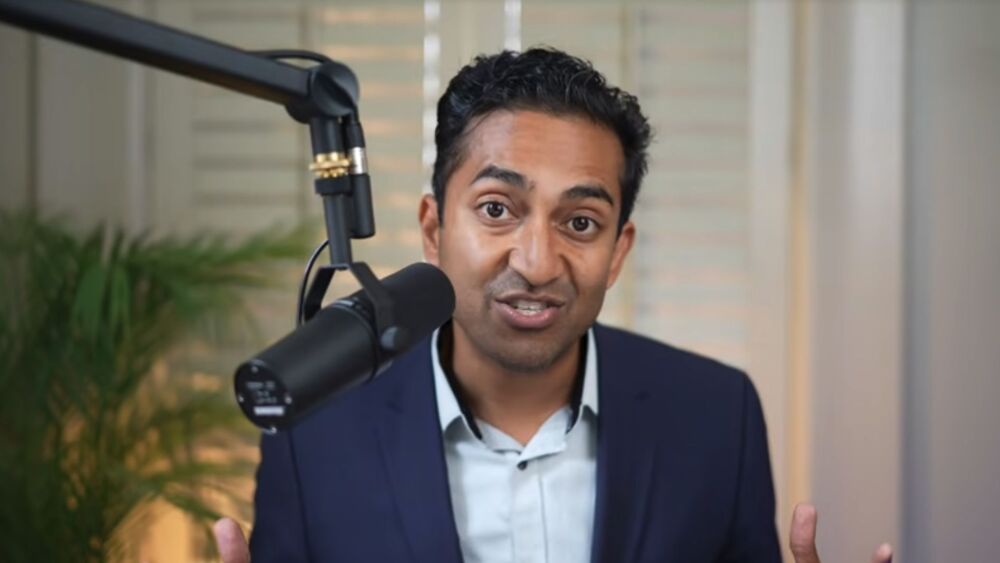As the Trump administration slashes funding for HIV-related research and infrastructure, Gilead, Immunocore and more are targeting the next goalpost: a cure.
Since Donald Trump took office in January, the National Institutes of Health has seen its funding cut for numerous HIV studies, alarming researchers and likely reducing the chances of achieving the president’s own 2019 goal of ending HIV in the U.S. by 2030. Against this backdrop, biopharma companies such as Gilead Sciences and Immunocore are pursuing the holy grail—a cure.
Medicine has made considerable strides against HIV since the advent of the epidemic in 1981. The death rate from HIV in the U.S. fell from 16.2 per 100,000 infected people in 1995 to 1.3 per 100,000 in 2022, according to Statista, as antiretroviral therapy (ART) controlled the virus in people with HIV and, more recently, pre-exposure prophylaxis (PrEP) allowed high-risk individuals to protect themselves against infection in the first place.
This progress could be in danger, however. As of April 11, the NIH had cancelled approximately 770 active research grants, Scientific American reported. Of the projects axed as of that date, 29% were related to HIV/AIDS, according to the publication. These programs and those focused on COVID-19 made up a disproportionate amount of the culled research, accounting for 46% of halted projects despite these areas garnering less than 4% of 2024 NIH grants.
Martin Rhee, vice president of HIV clinical development at Gilead, said that NIH funding is key to HIV research. “Federal funding is really, really important, for scientific innovation, but also at the level of implementation as well,” he told BioSpace. Rhee pointed to the AIDS Clinical Trials Group (ACTG) and the HIV Prevention Trials Network (HPTN) as two federally funded groups that have “really played an important role” in bringing drugs to the market. Gilead, whose ART Sunlenca (lenacapavir) earned FDA approval in December 2022, has partnerships with ACTG for clinical trials.
As this arm of the HIV space is challenged by cuts under the new administration, Gilead and other private sector players are carrying on the mission. Industry “also [has] a very, very important role to play in drug development,” Rhee said, “and we will continue to focus on scientific innovation and really bringing important scientific discoveries to patients who need them.”
Now that the virus is largely under control in the U.S., the focus is on keeping it that way with PrEP and discovering a cure for the now decades-old threat.
Going for a Cure
Near-term, the goal in the HIV space is to offer options that require less frequent dosing. “When you look at the underlying reasons why [disease in] some people may not be suppressed, often what comes up is the stigma of daily pill-taking and also just the sheer burden of having to take a pill every day,” Rhee explained.
Currently approved as an ART, Gilead is seeking the FDA’s greenlight for twice-yearly lenacapavir for HIV prevention, with a PDUFA date of June 19. Additionally, at the 2025 Conference on Retroviruses and Opportunistic Infections (CROI) in March, Gilead presented Phase I data showing that two novel once-yearly formulations of lenacapavir led to higher plasma concentrations of the drug than were needed to show efficacy in Phase III trials of patients treated twice a year. The company expects to launch a Phase III trial for once-yearly lenacapavir in the second half of 2025, according to a March press release.
Alongside Gilead, GSK and ViiV are also working on long-acting antivirals. But the ultimate goal is to totally rid patients of the virus such that treatment is not necessary at all.
“Cure will always be, I think, the final goal post in some ways,” Rhee said. The challenge, he continued, is that HIV has never been cured naturally. “We have elite controllers, but really no good example of a naturally cured infection.”
There have been cases, however, that have spurred hope for a curative HIV treatment. The most famous is probably that of Timothy Ray Brown, aka “the Berlin patient.” Brown, who was diagnosed with HIV in 1995, developed acute myeloid leukemia 12 years later. Brown received a bone marrow transplant from a donor who was naturally resistant to HIV thanks to a rare mutation in the CCR5 gene. Miraculously, the virus was undetectable in his system just three months later despite the fact that Brown had stopped taking his antiviral medicine the day of the procedure. From then until his death from cancer in September 2020, the HIV was never detected again.
Unfortunately, bone marrow transplants aren’t feasible for every patient. “That’s been the major, major challenge within the HIV cure field, because we want to develop an intervention and regimen that is scalable,” Rhee said. But the virus doesn’t make it easy. “Biologically and scientifically, it is very, very challenging because of the diversity of the virus [and] also the way it evades the immune system and goes undetected . . . through a reservoir,” he explained.
Historically, no one has been able to show any impact on the reservoir, David Berman, EVP of research and development at Immunocore, told BioSpace. But that doesn’t mean biopharma is giving up. While antiretroviral therapies block the HIV from replicating, they do not eliminate the reservoir. Although fully eradicating the virus from the body—what might be called a true cure—is still a lofty goal, researchers are focused on a functional cure, or remission, where the reservoir has shrunk to a smaller size and immune control is induced for what remains.
Devi SanGupta, head of Gilead’s HIV cure strategy, said that, most likely, “a combination of agents will be required both really for a functional cure, or a complete cure.” Among those agents could be Gilead’s bispecific T cell engager GS-8588. One arm of the molecule targets HIV that is expressed on infected cells, while the other targets T cells, explained SenGupta. “It’s actually trying to bring the T cells together with the infected HIV infected cells, so that those T cells can then destroy the infected cells.”
Pennsylvania and Maryland–based Immunocore is also developing a bispecific T cell engager. In January 2022, Kimmtrak was approved by the FDA for uveal melanoma, becoming the first T cell receptor therapy to win the regulator’s greenlight. “Now we’re turning to HIV,” Berman said. “I think the dream has always been to have some type of immunotherapy approach where you can harness the immune system to target the virus.”
At CROI, Immunocore presented data from a Phase I/II trial showing that its candidate, IMC-M113V, elicited “signals of dose-dependent viral control after antiretroviral treatment (ART) is interrupted,” according to a March press release.
Typically, one in a million T cells in the blood will have the virus in them, so a key data point for Immunocore was looking at the level of HIV RNA in the T cells. And reductions were seen, “so we believe the mechanism may be working,” Berman said.
In the trial, 16 patients with HIV taking ART were given weekly IV infusions of IMC-M113V for 12 weeks. After stopping all treatment, three participants given the highest dose of 300 micrograms saw an initial rebound in viral load, “and then it went back down,” Berman said. Immunocore will continue to monitor these patients to see if the virus will “start to burn itself out.” The company also plans to test higher dose levels.
Meanwhile, Excision is taking a CRISPR-based approach, claiming on its website to have “demonstrated the first functional therapeutic treatment for HIV in animals.” In May 2024, the biotech presented data from a Phase I/II study of EBT-101, showing “important clinical evidence that a gene editing treatment modality can be safely delivered for targeting the HIV DNA reservoirs in human cells,” Rachel Presti, professor of Medicine at Washington University School of Medicine in St. Louis and a principal investigator on the trial, said in a statement.
Achieving a functional cure for HIV is important for three reasons, Berman stressed. First, even with the virus suppressed, the reservoir can cause mild but chronic inflammation, which can have an impact on the cardiovascular system, he said. “So there’s a need to get that chronic inflammation under control.” Second, with ART, there is a risk of resistance, particularly when people are inconsistent with treatment. And finally, there’s a social stigma when somebody has transmissible levels of HIV.
Ecosystem Disrupted
Unfortunately, it may be this very social stigma that weakens one of HIV research’s prime funding sources.
“I can only predict that [the NIH cuts are] because of the population that it affects,” John Meade, senior program manager for Policy at the AIDS Vaccine Advocacy Coalition (AVAC), told BioSpace. “HIV research has always been based on the marginalized and the most vulnerable populations, and cutting those will only hurt those populations, which I think is the goal of this administration.”
Whatever the reason, the HIV space is feeling the pressure, and SenGupta emphasized the role that Gilead and its peers play in ensuring the research continues. “It’s an ecosystem,” she said, “and we’re doing our best in that ecosystem to keep things moving and also making sure that we’re engaging with the lawmakers as appropriate.”
Correction (May 12): A previous version of this article stated that twice-yearly lenacapavir is FDA approved for the prevention of HIV. In fact, lenacapavir is approved as an ART for HIV. BioSpace regrets the error.






